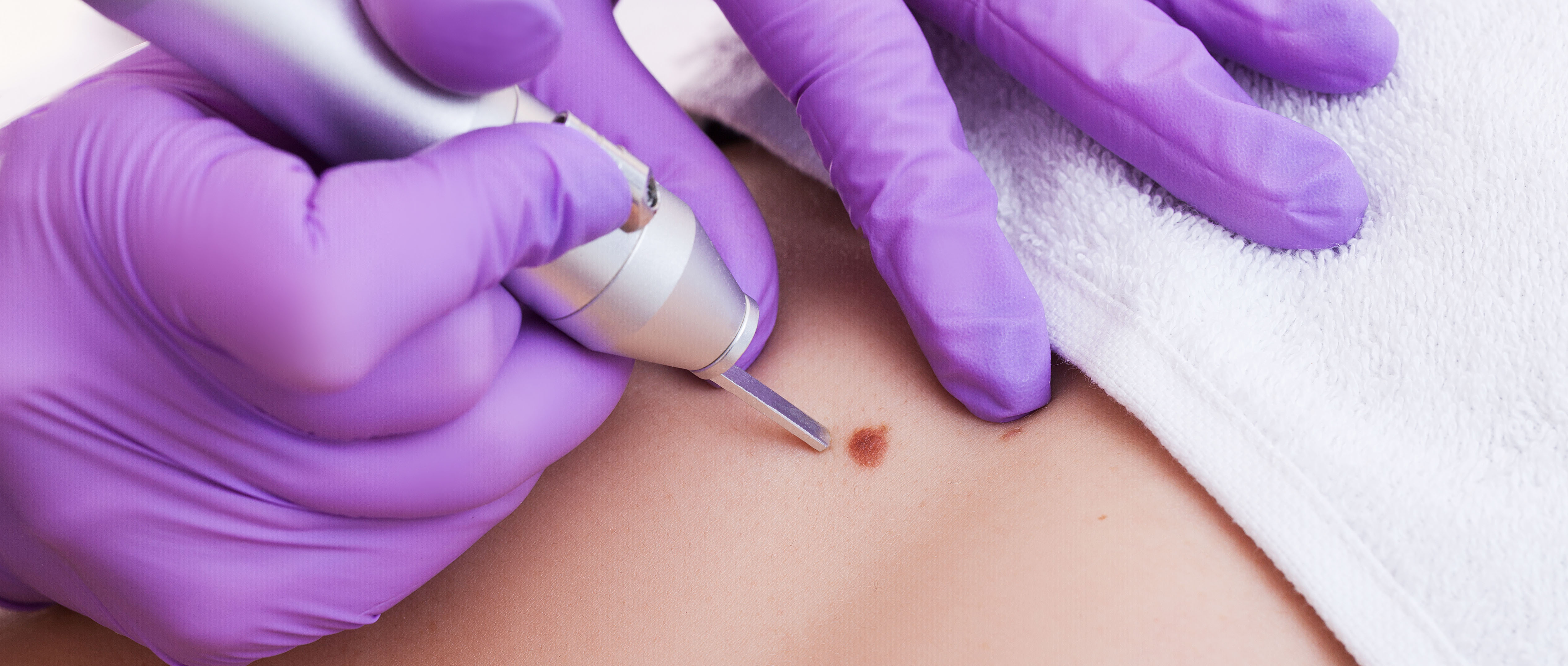
Skin lesions appear different to the skin around them and tend to differ in shape, size and colour. Warts, skin tags and keloids are skin lesions that often develop due to skin damage, genetics or sun damage. Dr Tinashe I Maphosa is equipped to remove skin tags, warts and keloids through expert dermatology treatments.
Warts are lesions on the skin that occur from the human papillomavirus (HPV). They appear as patches of rough skin or bumps on the skin. Although they aren't dangerous, they are contagious and can be uncomfortable and even painful. It's common to have warts on the hands and feet, but they can also appear on the face and genitals.
Warts come in various shapes, sizes and colours, but there are typically five primary types that occur.
Skin tags are benign tumours that appear on the skin as small, soft, hanging growths. They tend to form in areas where clothes rub the body and appear after midlife. In many cases, skin tags go unnoticed. This is because they are entirely harmless and are often removed for convenience or aesthetics.
Skin tags occur on the skin for both men and women, but typically later in life. They are mostly present in areas where clothes rub against the skin but can also be found in the following areas:
Keloids develop as a result of an overgrowth of scar tissue, forming hard, raised bumps where an injury occurred. Scar tissue is fibrous tissue that grows over an injured area, but in some cases, people are more prone to having extra scar tissue that frequently leads to keloids. These are not dangerous but can cause emotional distress, low self-esteem and daily inconveniences.
Signs that you may be developing a keloid include:
Although skin lesions don't always pose a risk to your overall health, they can be debilitating and unsightly. Dr Maphosa provides various treatments that remove or reduce the appearance of skin lesions.
Excision: This refers to the total removal of a skin lesion using a scalpel to cut the skin tag, wart or keloid off the skin. Dr Maphosa will inject the area with local anaesthesia to ensure it is numb before removing the lesion. In the case of warts, you may require several sessions to remove the tissue altogether.
Cryotherapy: Cryotherapy is a process of exposing the lesion to extreme cold temperatures so that it freezes, blisters and falls off on its own. This is especially effective for keloids, as they return after surgical removal. During cryotherapy, Dr Maphosa applies liquid nitrogen to the tag, wart or keloid with a cotton swab. It will then freeze, and the tissue will expel itself naturally.
Cauterisation: This procedure uses electricity to burn off the skin lesion through electrolysis. Dr Maphosa uses an advanced tool with a tiny point to apply extreme heat to the site, burning the tissue and preventing it from growing again.
Intralesional injections: Intralesional injections with triamcinolone and/or 5-fluorouracil can be used in the treatment of Keloids. Dr Tinashe Maphosa will numb the area up with a local anesthetic, then inject cortisone or 50-flourouracil to help reduce the size of the keloids.The procedure is an office based procedure.
